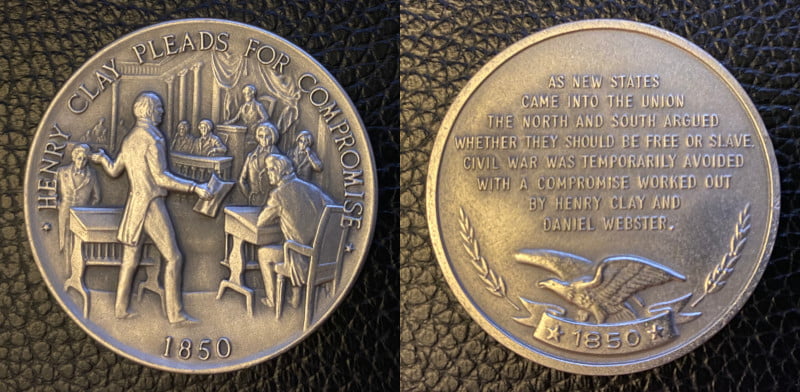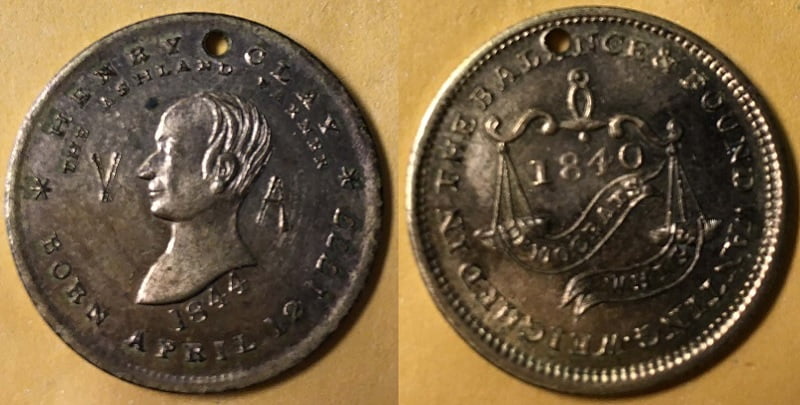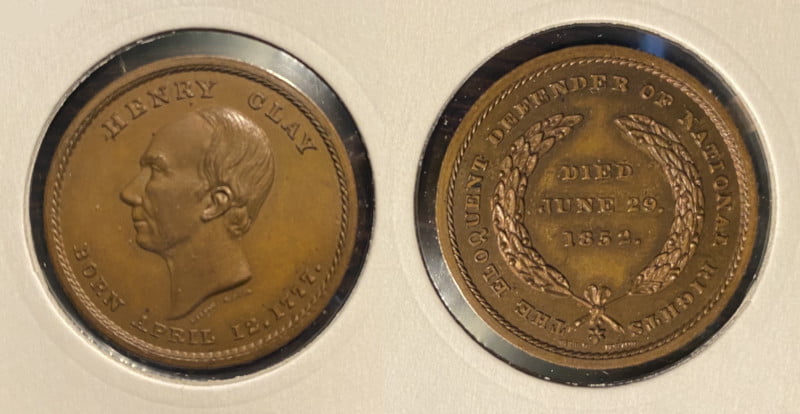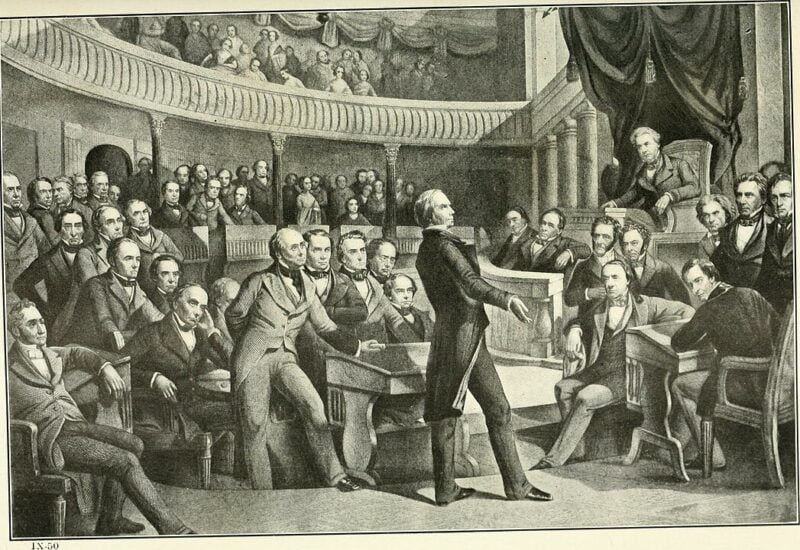It may not be in vogue anymore, but there have been several well-respected figures in American history who have lost a Presidential election as a major party nominee, only to come back and win the White House. Thomas Jefferson lost a razor-thin contest in 1796 and won four years later. Andrew Jackson prevailed in 1828, four years after he lost in a contingent election before the House of Representatives. Grover Cleveland attained his status as a trivia question by serving his two nonconsecutive terms between a losing effort in 1888. Heck, I wrote an entire book about how Richard Nixon survived losing the 1960 race to JFK only to prevail in 1968.
Of course, not everyone managed to pull off successful comebacks. Democrats nominated William Jennings Bryan in 1896, 1900, and 1908 and he lost all three times. Democrats also trotted out Adlai Stevenson twice, losing two lopsided contests to Dwight D. Eisenhower in 1952 and 1956. Republican Thomas Dewey looked set to win in 1948, four years after he lost to FDR, only to famously not defeat Harry Truman. And, during the days when Presidential elections were more regional in nature, men like Charles Pinckney, George Clinton, John Jay, Rufus King and others found themselves on the short end of multiple general election ballots, although their level of interest or involvement varied.
Then there’s Henry Clay.
A former U.S. Speaker of the House, Secretary of State and Senator, Clay is, perhaps, the most accomplished politician to never win the White House. The famed Kentucky statesman pursued the Presidency five times, losing in the general elections of 1824, 1832 and 1844. Despite these losses, he loomed so large over national politics that he was considered a viable nominee in 1840 and 1848, but lost out at the nominating conventions.

There were several reasons why he always seemed to come up short. His “American System” of economic protectionism, nationwide internal improvements and federal monetary reforms came at a time of rising sectional rivalries and tensions, while his attempts to chart a middle path on slavery led to distrust from all sides. In some cases, his lack of personal popularity cost him — particularly in 1832 when he was steamrolled by the more charismatic Jackson.
But ultimately, it just seemed as if Clay belonged in the legislative branch, not the executive. As one of the most powerful and influential Speakers in history (as well as one of the longest-reigning— only Sam Rayburn spent more time in office), Clay helped push the U.S. into the War of 1812, negotiated the Missouri Compromise of 1820 and formulated much of the American System from his perch in the House. Later on, as Senator, he led the passage of the Compromise of 1850, which delayed the Civil War for a decade. In 1959, he was named one of the five greatest U.S. Senators of all time.
As The Numismatist pointed out, “no defeated candidate for the Presidency was ever so bemedaled as Henry Clay.”
Despite that, there aren’t many tokens or medals from his 1832 run, and the few that exist are quite rare and expensive.

It’s much easier to find stuff from his subsequent runs. The above token is from his abortive run in 1840 — arguably his biggest missed opportunity. Incumbent Democratic President Martin Van Buren was reeling from the Panic of 1837 and was deeply unpopular. While the election seemed like a gimme, three consecutive shellackings at the hands of Jackson and his Democrats had gotten into the heads of Whig Party officials.
By the time 1840 rolled around, the country was in such a deep depression that it would have been obvious to all observers that Van Buren was bound to lose – that the Whigs could have run anybody and beaten Van Buren. And if they had known that, the Whigs would have run Clay.
Daniel Walker Howe, The Presidents (TV Series), History Channel
Clay certainly believed it was his year. The Kentucky Senator fought hard for the nomination and even led after the first round of balloting at the Whig convention. However, his support gradually eroded and a major reason why was because of a speech he had given on the floor of the Senate in February 1839 about what was quickly becoming the biggest hot-button topic in the country: slavery.
According to Bonnie Goodman, Clay refused to duck tough questions throughout his career and the run-up to the 1840 campaign was no different. “I’d rather be right than be President,” Clay famously said. When longtime rival John Calhoun set Clay up by introducing several pro-slavery resolutions in the Senate, Clay, himself a slaveholder, willingly walked into the South Carolinian’s trap and gave a strong defense for maintaining the status quo.
Is it not better for both parties that the existing state of things should be preserved, instead of exposing them to the horrible strives and contests which would inevitably attend immediate abolition?
Henry Clay, February 7. 1839, Senate Speech
The speech solidified Clay’s support amongst Southern Whigs, who made up his primary base of support as he entered the Whig National Convention. However, Clay’s explicit rejection of abolition (“Providence will cure all — abolition nothing” and abolition “would be followed by a desperate struggle for immediate ascendancy of the black race over the white race, or rather it would be followed by instantaneous collisions between the two races which would break out into civil war…”) came back to haunt him as Northern Whigs refused to back him and passed rules at the Convention designed to hurt him. While his equivocation over slavery had made him an ideal arbiter and mediator in Congress, it came back to haunt him when he tried to become President.
Instead, the Whigs decided to back someone they believed would be their version of Old Hickory. Like Jackson, William Henry Harrison was a war hero who had made his bones putting down Native American revolts (his most famous victory was at Tippecanoe, leading to one of the most famous campaign slogans of all time: “Tippecanoe and Tyler, Too”). Harrison had previously lost a Presidential general election. However, his loss could be explained away by the fact that the Whigs had run several regional candidates against Van Buren in 1836 in a strategy to try and deny Democrats an outright majority and throw the election to the House.
Additionally, Whigs loved that Harrison was seen as a simple man of the people, despite the fact that he was anything but. An aristocrat and member of one of the most distinguished families in America, Harrison was fluent in Latin and had studied to be a doctor before joining the military. He was a landowner but lived in a simple log cabin, forming the basis for his successful log cabin candidacy, a formula that others, notably Abraham Lincoln, would successfully emulate.
Ultimately, Clay grudgingly accepted Harrison’s nomination — aided, no doubt, by Harrison’s promise to re-charter the National Bank and his commitment to the American System. Of course, it all ended up being for naught, as Harrison died after only one month in office. Successor John Tyler held diametrically opposing views and split with Clay and the Whigs in Congress.
The above token is a departure from the usual, no-nonsense Clay tokens of that era in that it takes a page from other notable leaders throughout history and portrays Clay as a Caesar-type figure, complete with toga and laurel crown. Perhaps the manufacturers of this token were trying to elevate Clay and make him seem like the inevitable President-in-waiting.
Meanwhile, the reverse bears the motto: “United We Stand.” As it happened, the “we” is often the first part of the token to get worn out, and for many of the tokens available for sale online, the “we” is either completely or mostly gone. That seems poetic, given how the Union he tried so hard to preserve with his compromises fell apart less than 10 years after his death in 1852.
The Whigs’ split with Tyler left Clay in pole position to seize the nomination in 1844. With no real rivals left in the party to challenge him (his only real peer was Daniel Webster, however, Webster had been tainted by his decision to continue serving in Tyler’s Administration), Clay was nominated unanimously.

This token hoped to capitalize on any buyers’ remorse from 1840 – either from Whigs who got stuck with Tyler or general election voters who thought they were voting for an American System-esque platform. The reverse, which bore the image of scale tilted in the Whigs’ favor and surrounded by the Biblical phrase “weighed in the balance and found wanting,” spoke to this theme. The implication was that the Whigs had failed to deliver on their promises in 1840, and Clay was the person to rectify that.
Meanwhile, the obverse marked the return of the no-nonsense Clay bust. No more togas or laurel crowns for the Senator from Kentucky. After all, Harrison had succeeded with his man-of-the-people campaign-style run. Perhaps Clay felt he needed to follow suit.
Also in Clay’s favor was that Democrats seemed like they were disarray over whom to nominate. Dark horse candidate James K. Polk had been nominated after nine ballots at the Convention. However the ex-Speaker of the House was so unknown on the national stage that Whigs started using “Who is James K. Polk?” as an unofficial campaign slogan.

In fact, some tokens from that era made it seem like the election was a done deal and that the most pressing problem Clay faced was how should he redecorate the Oval Office. The above token proclaimed that Clay had been elected president in 1844 and inaugurated on March 4, 1845. Much like the pre-made Super Bowl-winning merchandise with the losers’ logos on them that gets shipped to a third-world country, these tokens serve as an uncomfortable reminder of what happens when you celebrate too soon.
Especially since Clay’s enemies had a pretty good plan up their sleeves. Tyler had decided he would do just about anything to defeat Clay and threw in his lot with Democrats. The outgoing President had shrewdly whipped up support for the annexation of Texas and it became a central issue in the election. Polk and many Democrats were in favor of annexation while Clay and the Whigs were officially against it worrying that adding another slave state into the Union would exacerbate sectional tensions — to say nothing of a potential war with Mexico.

Once again, Clay was right. The U.S. would go to war with Mexico midway through Polk’s first and only term, and would be at war with itself a decade-and-a-half later. And once again, being right cost him. In a shocking result, Polk won the White House, consigning Clay to a narrow defeat.
Clay would make one last attempt to win the White House, losing the 1848 Whig nomination to another war hero, Zachary Taylor. This token tried to capitalize on his famous quote: “I would rather be right than be President.” It was a curious choice, as it made it seem as being President wasn’t Clay’s top priority. Instead, it made it look like he was more concerned with his legacy.

Or maybe he knew he was about to run out of chances. His health failing, a dying Clay played no role at the 1852 Whig National Convention and would pass away less than 10 days after his party selected General Winfield Scott to be its standard bearer. The Whigs, themselves, would soon follow their longtime leader into the graveyard, as the party would be no more by the time the 1856 Presidential election came around.

This token was struck after Clay’s death in 1852. It’s a smaller-scale version of a gold memorial medal that Clay, himself, consulted on before his death. On the reverse of said gold medal, Clay listed his greatest accomplishments, which included services as Senator, Speaker of the House and Secretary of State, as well as the American System, the Missouri Compromise and the Compromise of 1850. Designed by Boston-area sculptor Joseph Merriam, this circa 1860 token boils down Clay’s many accomplishments into one, fitting title: “The Eloquent Defender of National Rights.”
As The Numismatist points out, Clay’s list of accomplishments on the reverse of the gold medal, understandably, did not include his five failed runs for the Presidency. Apparently, it was always a sore point:
My friends are not worth the powder and shot it would take to kill them!… If there were two Henry Clays, one of them would make the other President of the United States!… It is a diabolical intrigue, I know now, which has betrayed me. I am the most unfortunate man in the history of parties: always run by my friends when sure to be defeated, and now betrayed for a nomination when I, or any one, would be sure of an election.
Henry Clay reputedly complained in 1840, Wikiquote.
Looks like he was right about that, too.

